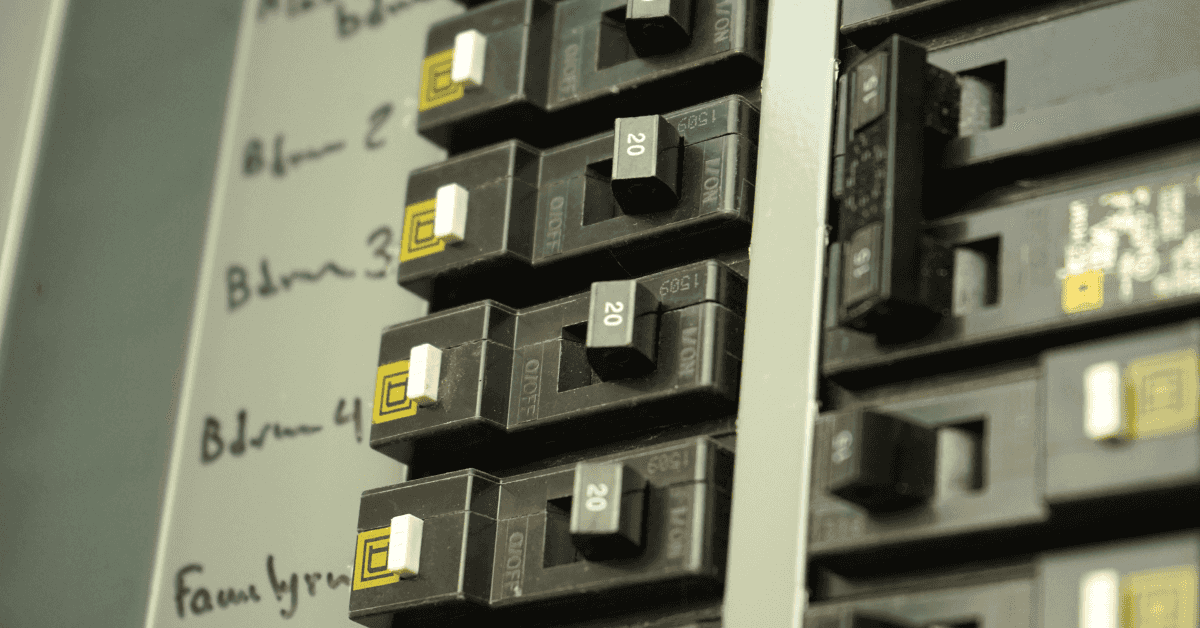How to Shut Things Off: Gas, Water, Electricity

Utilities such as gas, water and electricity are essential for running a home, but there are many reasons you may need to shut your utilities off. Natural disasters like hurricanes or tornadoes, repairs, or damage such as a burst pipe can create the need to turn these utilities off at a moment’s notice. It is important when owning a home that you are aware of how to shut off these utilities and are prepared to do so.
How to shut off the water supply
Step 1: locate the water shut off valve
First, you need to locate the water shut off valve. Dependent on where you are located and if you have public or well water, this could be in the basement or crawl space, along a fence or side of the building, or in the water meter box. The shut off valve looks like it sounds – a large turning valve connected to the main water line entering your home. This valve can be round, or it can look like a handle. In newer homes, the valve is almost always colored red.
Step 2: bring tools, just in case
If your water valve has not been shut off in a long time, it can be very difficult to turn due to age, rust, or dirt. It is always a good idea to have some tools handy. Have a flat head screwdriver and an adjustable wrench to help you with the job. You may also need lubricant or degreaser (such as WD-40) if the valve is especially difficult to turn. Bring a pair of work gloves to protect your hands and help with additional grip on the valve.
If you have public water and the shut off valve is in a meter box, you may need to open the meter box first. Most public water meter boxes have a notch, or “keyhole”, in the side or top that can allow you to pop open the box. A flat head screwdriver inserted in the keyhole can help you wiggle the lid open. Keep in mind that meter boxes are excellent places for insects or pests to make a home, so be cautious when opening the lid and wear your gloves for safety.
Step 3: turn the valve and shut off the water
Shut off valves are rotated fully open, or on, when the water is in use. It will be your job when shutting off the valve to rotate the valve fully closed. If your shut off valve is a round dial, try rotating it clockwise or counterclockwise until you have movement and know which direction to turn to shut it off. Be sure to rotate it until it can no longer turn. If your valve is in the shape of a handle, move it until it is perpendicular with the pipe and cannot move further.
Go to the nearest faucet and turn it on to confirm you have shut off the water. If you have turned it off properly, excess water in the pipes will initially come out, but then no more water will exit the faucet.
When it is time to turn the water back on, follow the steps above but in the opposite direction. Do not be surprised when the water comes back on that your faucet spits and sputters for a minute or two. The water will push out air trapped in the pipes causing it to sputter, and then will flow normally.
How to turn off electricity
Electricity is especially important to turn off quickly when there is an emergency, as electricity can seriously harm a person or start a fire. If you have an exposed wire, a sparking switch or outlet, an impending disaster such as a hurricane, or a gas leak, immediately turn off all your electricity for safety.
Step 1: find the circuit breaker box
The circuit breaker box, or electrical panel, controls all the electricity coming into your home to the various electrical lines running through your house. Circuit breaker boxes are gray and contain rows of black circuits and circuit switches. The circuit box has a door that can be opened either by a slight lift of the door to unlatch it, or a latch that can be turned or pressed.
The circuit breaker box can be located anywhere, so it is important you find it and make sure nothing is obstructing it from being quickly opened. You may need to have a flashlight handy if it is in a dark closet or basement.
Step 2: turn off the individual circuits and then the Main switch
Breaker boxes have a single main switch located in the panel that turns off the entire box, and thereby shuts off all electricity coming into your home. It is usually a larger switch, by itself or off to the side, and marked “Main” or “Shut Off”. If you are in a multi-family, apartment, or older home, you may not have access to the main switch from within your home or from the main electrical panel. If the Main switch is not accessible to you, it is best you make yourself familiar with its location (sometimes on the outside of the home) and/or who to call should it need to be switched off.
In an extreme emergency, switch off the main switch and cut off all electricity. However, if you have time, it is best practice to turn off all the individual breakers first before turning off the main switch to avoid a power surge.
A power surge can be created by suddenly turning on or off the main power to your electrical panel and overloading the circuits. It can cause immense damage to appliances, computers, televisions or start a fire in your house. This is especially true in older homes with old wiring or ungrounded plugs.
Switch off the individual circuits by pushing each black switch to off. If you are unsure which direction is off, flip a switch and notice if the switch can wiggle back and forth. If it can, it is off. You can also test this by turning off a circuit to a known light. Leave the light on, push the circuit switch, and see if the light turned off. You will then verify which direction to push the circuits in that row to be off.
After resolving the electrical issue, you can turn the main switch on, then turn on the individual breakers one at time.
How to turn off the gas
Gas is extremely volatile and dangerous when it becomes airborne within an enclosed space such as a house or apartment or underground air pocket. Because of its volatility, it is often best you leave turning off the gas to the professionals. Make sure you have the gas company’s phone number handy for emergencies. It is important if you smell gas or suspect a gas leak that you take the following precautions:
Do not touch anything that can produce a flame or spark, such as an electrical switch, a cigarette lighter, or an oven. You also want to avoid producing a spark through static electricity, such as walking on carpet in socks.
Do not stay in the house. Move yourself and any other living beings such as pets to a safe place in open air at least 50 feet from your home and call the gas company immediately.
If the gas company tells you to turn off the main gas valve, go ahead and follow the next steps. However, turning off the gas valve is never recommended without the gas company’s analysis of the situation. If you live in an area prone to disaster conditions such as earthquakes or hurricanes, you can speak to the gas company about installing an auto-shut off valve on your gas line.
Step 1: identify the location of the main gas valve
In most cases, the main gas valve is located on the outside wall of the building. It is usually gray in color, in the shape of a box with a pipe coming up from the ground and another going into your home. It may have a meter on it if you connect to city gas lines. Inspect the pipes. If there is any rust, corrosion or damage to the box or pipes, report this to the gas company and do not proceed.
Step 2: bring tools for the job
You will need an adjustable wrench to turn off the gas. The on/off clamp is usually located on the pipe coming up from the ground or it can sometimes be located on the left side of the box as the pipe from the ground enters the box. The on/off clamp usually looks like a turn dial. When it is in alignment with the pipe, it is on. Take your adjustable wrench and turn the dial slowly, either to the left or right, until is it perpendicular to the pipe.
When the gas emergency has subsided, it is best you leave turning the gas back on to the professionals. Do not attempt to turn it back on unless directed to do so specifically by the gas company.
Knowing how and when to perform these tasks in your home can save you from hefty repair bills and headaches. When in doubt, call a professional. Or even better, use PunchList to find the best contractors in your local area to help you!


